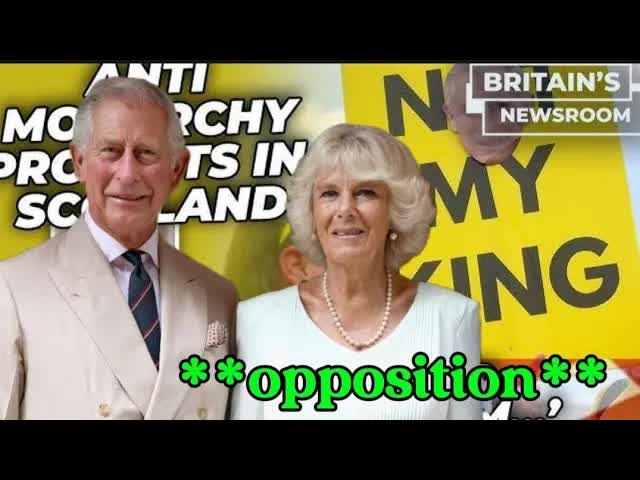As King Charles III embarks on his much-anticipated visit to Australia, the nation is buzzing with excitement and controversy.
The monarch was recently spotted at Heathrow Airport, boarding a commercial flight that is set to take him to Singapore before he reunites with Queen Camilla.
Together, they will then head to Sydney, where they will make history: it will mark the first time a reigning king has set foot on Australian soil.
This momentous occasion follows in the footsteps of his mother, the late Queen Elizabeth II, who was the first reigning monarch to visit Australia back in 1954, just a year after her own coronation.
However, this trip comes with its challenges.
King Charles’s health has been a topic of concern due to his recent cancer diagnosis, leading to some adjustments in the royal itinerary.
Originally, the couple planned to include New Zealand in their travels, but that leg of the journey has been scrapped.
Instead, the king will focus on New South Wales, specifically Sydney and Canberra, making for a shorter six-day trip compared to the extensive tour his mother undertook nearly seven decades ago.
At 75 years old, King Charles’s visit is a stark contrast to Queen Elizabeth’s youthful appearance during her first Australian tour at just 27.
The king’s age and health have led to some disappointment among racegoers in Sydney, as he has opted for a rest day tomorrow, skipping the King Charles III Stakes at Randwick Racecourse.
Nevertheless, he will still engage with local experts, meeting two notable cancer specialists who have made significant strides in combating melanoma, a prevalent form of skin cancer in Australia.
Public sentiment regarding the royal visit is mixed, reflecting a divided nation.
Republican activists are gearing up for protests, dubbing this royal tour a “Farewell Tour of Oz.”
Graham Smith, a prominent figure in the Republican movement, has traveled to Sydney specifically to voice opposition against the monarchy.
Adding to the tension, six state premiers have declined to attend an official reception with the king and queen in Canberra, citing various reasons from cabinet meetings to trade commitments.
Monarchists view this as a slight, while Republicans argue that the costs associated with such an event would burden taxpayers.
While the political landscape is fraught with disagreement, many Australians express enthusiasm about the royal visit.
Conversations with locals reveal a spectrum of opinions.
Some are excited, recalling fond memories of previous encounters with the royals, while others remain indifferent, advocating for a shift towards a republic.
The Australian Monarchist League has even taken the initiative to welcome the king with a letter signed by thousands, emphasizing their commitment to preserving the constitutional monarchy as a safeguard for the nation’s freedoms.
As King Charles and Queen Camilla prepare to land in Australia, the iconic Sydney Opera House will be illuminated with images celebrating the king’s past visits.
This vibrant display serves as a reminder of the historical ties between Australia and the British crown, yet it also highlights the growing calls for independence among segments of the population.
The arrival of King Charles III has ignited a resurgence of Republican sentiment across the country.
Demonstrators are taking to the streets, particularly in major urban centers like Sydney and Canberra, to advocate for a future free from monarchical influence.
With chants and placards, these protesters are making it clear that many Australians are ready to redefine their national identity.
The protests have drawn a diverse crowd, uniting individuals from various backgrounds, including students, indigenous groups, and labor unions.
Their collective message is one of defiance against the monarchy, reflecting a broader desire for a self-governed republic that aligns with contemporary Australian values and aspirations.
In preparation for the royal visit, authorities have ramped up security measures to ensure a peaceful event.
Concerns over potential clashes between supporters and opponents of the monarchy have prompted police to implement strict crowd control protocols.
The government is determined to maintain order during this historic occasion, especially as public opinion continues to evolve.
Recent polls indicate a significant shift in attitudes toward the monarchy, particularly among younger Australians.
As King Charles embarks on this pivotal tour, the strength of Republican sentiment is likely to influence discussions about the monarchy’s future in Australian governance.
The visit has become a catalyst for a larger conversation about Australia’s identity and its relationship with the British crown.
For many, the visit of King Charles III serves as a reminder of the complex history between the monarchy and Australia, especially regarding the treatment of Aboriginal and Torres Strait Islander communities.
As the country grapples with its colonial past, reactions to the royal visit remain deeply divided.
Some see it as an opportunity for reconciliation, while others view it as a continuation of a legacy that has marginalized indigenous peoples.
The arrival of King Charles III in Australia symbolizes not just a royal visit but a turning point in the ongoing debate about the monarchy’s relevance.
As protests unfold and discussions intensify, it remains to be seen whether this historic visit will strengthen the ties to the British crown or propel Australia further along the path toward becoming a fully independent republic.
Related Stories

